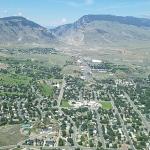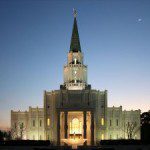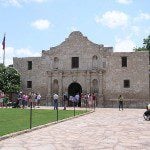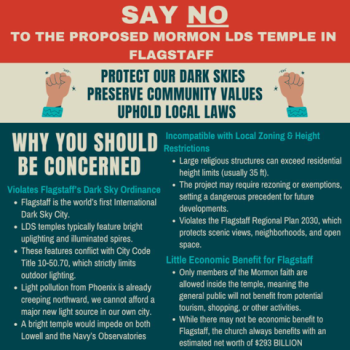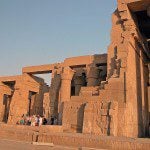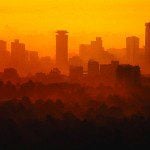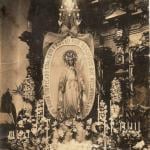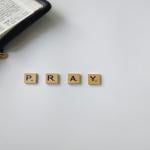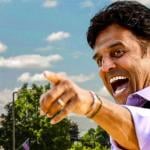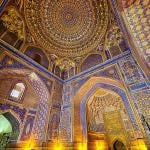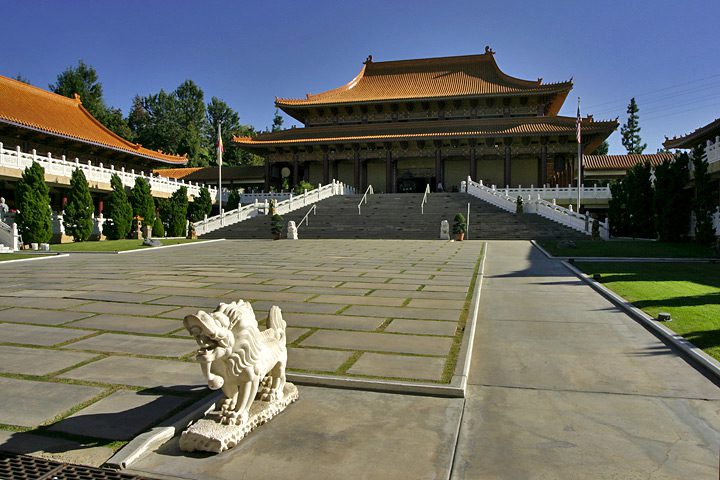
(Wikimedia Commons public domain photograph)
With my late friend Bill Hamblin (whom I miss literally every day), I published the article immediately below back on 12 October 2004. I wrote this one; the Hsi Lai Temple sits just over the hill from the home in which my parents spent their final three decades (and where my nephew and his family currently live) and was built while they were living in the area. There was some opposition to its construction back in the day, but not from me. I absolutely love it.
I haven’t checked to see whether telephone numbers, calendar items, and times are still the same today as they were nineteen years ago. They may be. But the URL definitely still works.
Largest Buddhist Temple in the Western Hemisphere
Nestled against the hills of Hacienda Heights in southern California stands the largest Buddhist temple in the western hemisphere. The grounds are decorated with gardens and statuary traditional to ancient Chinese monasteries. In sharp contrast are the ranch-style homes, typical of modern, suburban, upper middle class California, that crowd about the foot of the temple – many of them, in this particular neighborhood, occupied by the robed Buddhist monks and nuns who staff the shrine.
The Hsi Lai Temple – the name is pronounced something like “she lie” – sits on fifteen acres whose shape, a brochure explains, resembles that of a leaf of the Bodhi Tree. It was while meditating under that tree, a fig, that Siddhartha Gautama of the Sakya clan – the man outsiders know as “the Buddha,” although Buddhists believe that many have borne the title — attained enlightenment in sixth-century B.C. India. (The Sanskrit Bodhi means “enlightenment,” and Buddha means “enlightened one.”)
The temple complex itself, built in the architectural style favored by the Ming and Ching dynasties that ruled China from the fourteenth century into the twentieth, encompasses a floor area of 102,432 square feet. Besides several sanctuaries, including a private “Requiem Pagoda,” it contains a school, a gift shop, an information center, offices, a museum, and a large dining hall where vegetarian lunches are served.
The first shrine that a visitor enters is the Bodhisattva Hall. Bodhisattvas, in Buddhist belief, are not unlike saints in the Catholic tradition. They are enlightened beings – both men and women — who have vowed to serve others unselfishly, with compassion and loving kindness, and who are unswervingly committed to the classical Buddhist goal of liberating others from suffering. Each represents a virtue that Buddhists should emulate. The Bodhisattva Hall is dedicated to them.
Buddhist visitors to the hall bow before the statues of five Bodhisatvas, as they also bow to statues of the Buddha, and they bring such offerings as fruit, flowers, and incense. Much like Catholics praying to a saint or Eastern Orthodox Christians venerating an icon, they hasten to explain that they are not bowing before an idol but simply showing respect and humility, and seeking assistance in developing the virtues that the Bodhisattvas illustrate. By depositing a quarter in a machine like a bubble gum dispenser, visitors seeking wisdom or guidance can purchase a plastic ball containing a “dharma saying” – written on a strip of paper reminiscent of a fortune cookie — in either English or Chinese. A monk or nun posted nearby can help to interpret these sometimes cryptic statements. Under the Boddhisattva statues and behind the altar is written, in elegant Chinese, the sacred Buddhist “Diamond Sutra.”
The main shrine of the temple is formally known as the “Precious Hall of the Great Hero,” and is dedicated to the historical Sakyamuni Buddha – the Buddha from the Sakya clan. His statue dominates the hall, in which religious services are conducted, though large statues of two other Buddhas flank him on left and right, and more than ten thousand statues of yet other Buddhas richly ornament the chamber’s walls.
The Chinese words Hsi Lai mean “Coming to the West.” The temple’s title thus reflects the intention of the Taiwan-based Buddhist order that sponsors it (the Fo Guang Shan or “Buddha’s Light Mountain” order) to spread Buddhism in the West. Accordingly, the temple welcomes visitors between 9 AM and 5 PM every day. (Appointments are recommended for groups.) The staff offer courses and workshops on Buddhism – including meditation in both Chinese and English and the chanting of Buddhist scripture – and on such cultural topics as Buddhist dance, playing the zither, vegetarian cooking, and flower arranging. A special celebration of Chinese New Year designed for Americans is held annually, as are celebrations (in April, September, and November) of the birthdays of the three Buddhas of the main shrine.
The Hsi Lai Temple, situated just off Hacienda Boulevard, not far south of Highway 60, can be reached by telephone at (626) 961-9697, and on the Internet at www.hsilai.org. To step onto its grounds is to leave the often hectic and materialistic world of suburban California and to enter an ancient culture, exotic, fascinating, and friendly.
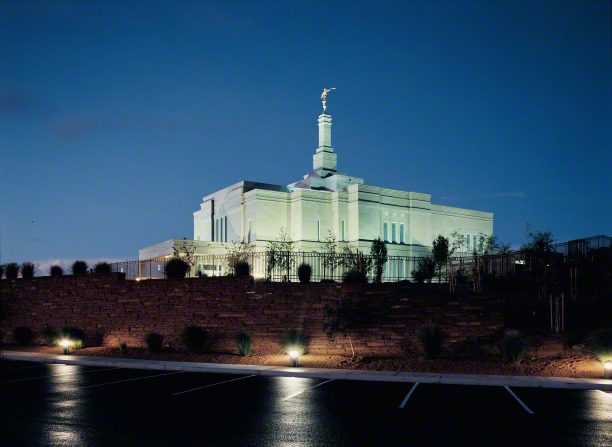
And here’s a favorite passage of mine from the Qur’an, a passage that is typically taken, by both Muslim commentators and Western scholars, to refer — with manifestly positive appreciation — to Syriac Christian monks and to the oil lamps of a seventh-century Middle Eastern monastery:
“God is the light of the heavens and the earth. The similitude of his light is like a niche in which is a lamp, and the lamp in a glass. The glass is like a pearly star, kindled from a blessed olive tree of neither the east nor the west, whose oil would almost glow even if no fire touched it. Light upon light. God guides to his light whomever he will, and he mints similitudes for the people. And God knows all things.
“[Such niches are] in houses which God has permitted to be raised, wherein his name is remembered and he is praised morning and evening
“[By] men whom neither commerce nor sale distracts from remembrance of God and the performance of prayer and the giving of alms, fearing a day on which hearts and eyes will be overturned,
“That God may reward them according to the best of their works and increase them from his graciousness.” (Qur’an 24:35-38, my fairly hasty translation)
The Qur’an’s laudatory description of Syriac Christian monasteries in late antiquity would not be far amiss if it were reapplied to today’s Latter-day Saint temples. They open early in the morning and close late at night, and they are devoted to the remembrance of God, to prayer, and to the service of our brothers and sisters, both living and dead.
You can, if you choose, count this as yet another comment from me on the controversy about the proposed Cody Wyoming Temple. (See, in chronological order, “A small tempest about a small temple in Cody,” “In the world after the Fall,” “Once More, on the Conflict in Cody.” “An Update on the Continuing Crisis in Cody, Wyoming,” “Peggy Brown, Dale Brown, and the Cody Wyoming Temple,” “My Last Comment on the Temple in Cody? (Probably Not),” “My last post on the temple in Cody? Maybe, for a while at least,” “What if Sacha Cohen were to visit Cody, Wyoming?” and “Sigh. Cody, Wyoming. Again.”)
Posted from Phoenix, Arizona


